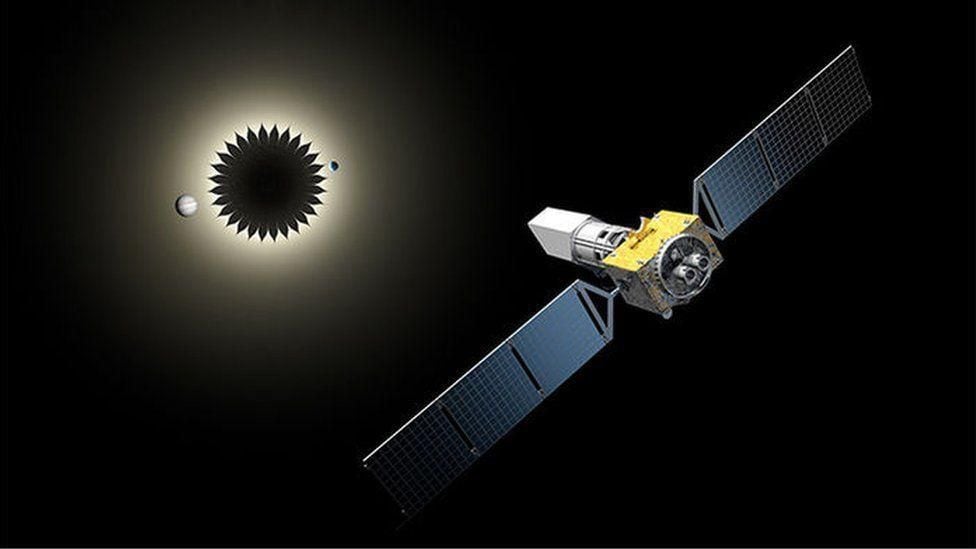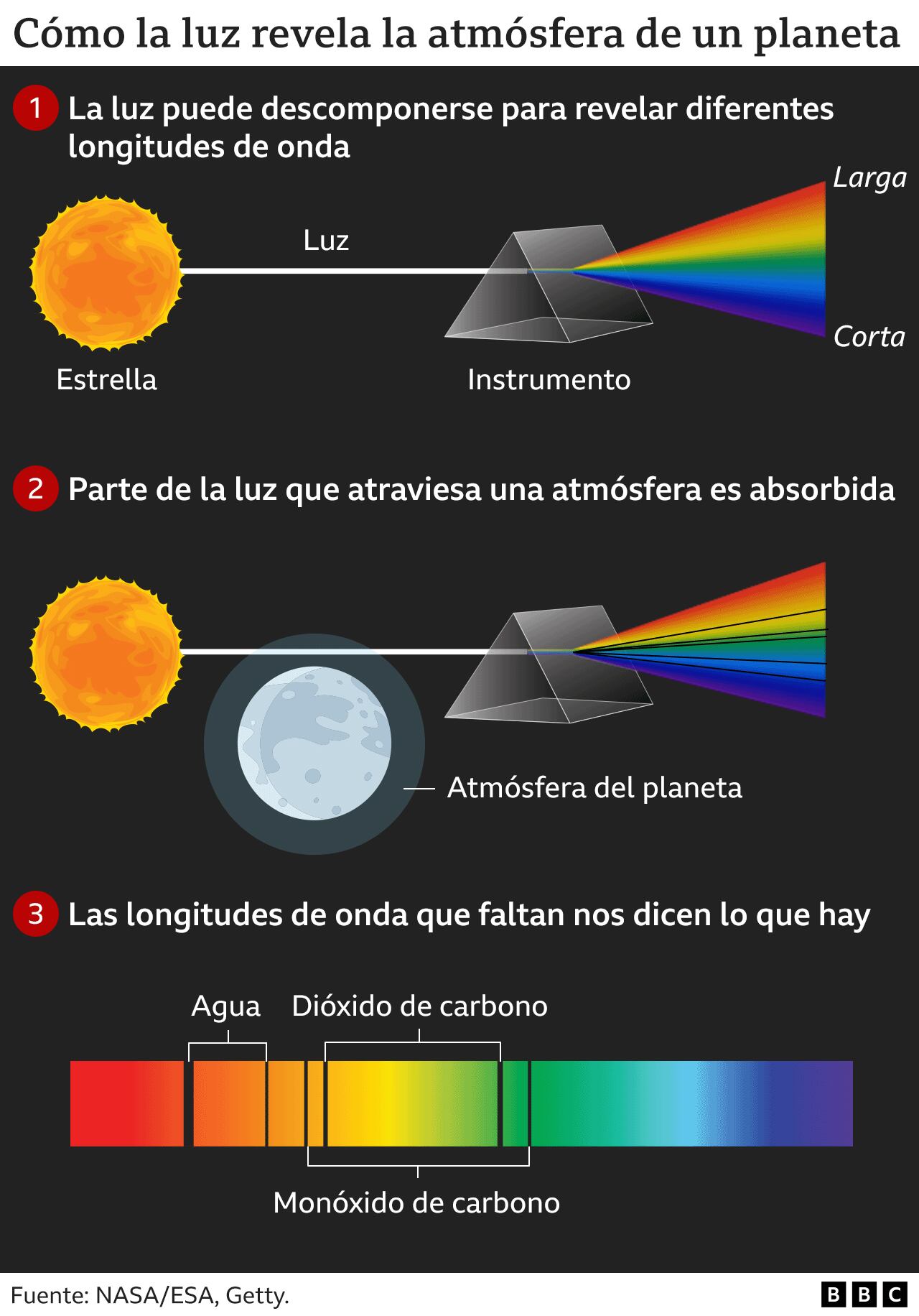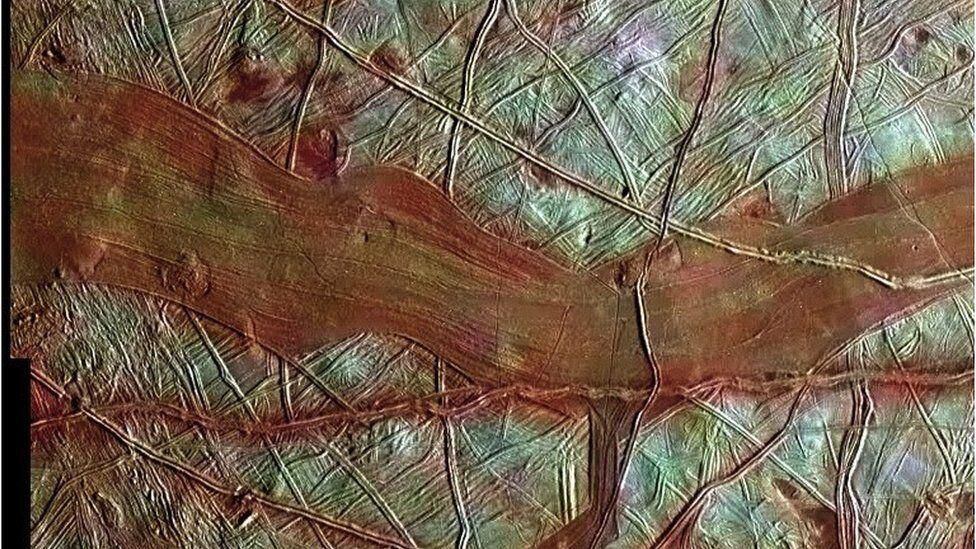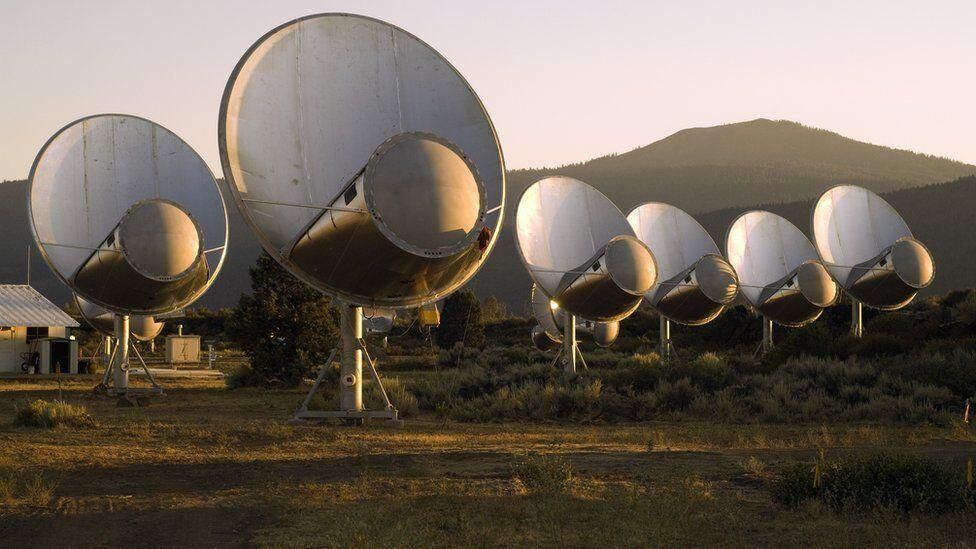Many astronomers no longer ask whether there is life in other parts of the world. Universe.
The question on their minds is: when will we find him?
LOOK: Why floods and extreme weather are causing a rise in forced child marriages around the world
Many are optimistic that we will detect signs of life on a distant world within our lifetimes, possibly within the next few years.
And one scientist, leading a mission to Jupiter, went so far as to say it would be “surprising” if there were no life on one of the planet’s icy moons.
NASA’s James Webb Space Telescope (JWST) recently detected tantalizing signs of life on a planet outside our Solar Systemand has many more worlds in sight.
Numerous missions underway or about to begin mark a new space race towards the greatest scientific discovery of all time.
“We live in an infinite Universe, with infinite stars and planets. And It is obvious to many of us that we cannot be the only intelligent life there is.“says Professor Catherine Heymans, astrophysicist at the Royal Observatory of Edinburgh.
“We now have the technology and the ability to answer the question of whether we are alone in the cosmos.”
The ‘Goldilocks zone’
Telescopes can now analyze the atmospheres of planets orbiting distant stars for signs of chemicals that, at least on Earth, can only be produced by living organisms.
The first hint of such a discovery emerged earlier this month with the possible sign of a gas produced by simple marine organisms on Earth, in the atmosphere of a planet called K2-18b, which is 120 light years away.
K2-18 b orbits the cool dwarf star K2-18, far enough away for the temperature to support life.
The planet is in what astronomers call the “Goldilocks zone”: just the right distance from its star so that the surface temperature is not neither too hot nor too coldbut just enough so that there is liquid water, essential to sustain life.
The team hopes to know within a year whether the tantalizing clues obtained will be confirmed or will disappear.
Professor Nikku Madhusudhan, from the Institute of Astronomy at the University of Cambridge, who led the study, says if the evidence is confirmed, it would “radically change the way we think about the search for life”.
“If we find signs of life on the first planet we study, will increase the possibility that life is common in the universe“.
Even if no signs of life are found on K2-18b, the team has 10 more Goldilocks planets on their study list and possibly many more after that.
Professor Madhusudhan predicts that In five years there will be what he describes as “an important transformation” in our understanding of planetary habitability and life in the Universe.

“By then we will have had the opportunity to study half a dozen planets like K2-18b or a little hotter.
“It is possible that we are close to achieving the first detection. On the other hand, no detection on any of them would also provide important information about the possibility of life on such planets.”
But as powerful as the JWST is, It also has its limits. The size of the Earth and its proximity to the Sun allow it to support life. But JWST was unable to detect distant planets as small as Earth (K2-18b is eight times larger) or as close to their parent stars, due to their brightness.
In this way, NASA is planning the Habitable Worlds Observatory (HWO), planned for the 2030s. Using what is actually a high-tech sunscreen, it minimizes the light from the stars orbiting the planet.
This means that will be able to detect and collect samples of the atmosphere of planets similar to ours.

Close to home
At the end of this decade, the Extremely Large Telescope (ELT) will also come into operation, which will be on the ground contemplating the crystal clear skies of the Chilean desert.
It has the largest mirror ever built, measuring 39 meters in diameter, so it can see much more detail in planetary atmospheres than its predecessors.
These three atmospheric analysis telescopes use a technique used by chemists for hundreds of yearsto discern the chemicals found in materials from the light they emit.
And both JWST and HWO are so incredibly powerful that they can do it from a tiny speck of light in the atmosphere of a planet orbiting a star hundreds of light years away.

While some look for distant planets, others restrict their search to our own backyard, to the planets in our own Solar System.
The most likely home for life is one of Jupiter’s icy moons, Europa.
It’s a beautiful world with cracks on the surface that look like tiger stripes. Europa has an ocean below its icy surface, from which columns of water vapor are expelled into space.

NASA Clipper missions and European Space Agency (ESA) Jupiter Icy Moons Explorer (Juice) missions They will get there in the early 2030s.
Shortly after the Juice mission was approved in 2012, Professor Michelle Dougherty, lead scientist on the European mission, said that “it would be surprising if there was no life on one of Jupiter’s icy moons.”
NASA is also sending a spacecraft called Dragonfly to land on one of Saturn’s moons, Titan.
It’s an exotic world with lakes and clouds made of chemicals.they are rich in carbon that give the planet a mysterious orange haze. Along with water, these chemicals are believed to be a necessary ingredient for life.

Mars is currently too inhospitable for living organisms, but astrobiologists believe the planet was once lush, with a dense atmosphere and oceans, and capable of supporting life.
NASA’s Perseverance rover is collecting samples of a crater believed to have been an ancient river delta. Another mission in the 2030s will bring these rocks to Earth to analyze them for possible microfossils of simple life forms that no longer exist.
These are just some of the many missions that are underway or planned for the coming years in search of signs of life on the planets of our Solar System; others search much further, into deep space.
intelligent life
Could there be aliens somewhere trying to contact us?
Some scientists consider this to be the domain of science fiction and a remote possibility, but the search for radio signals from extraterrestrial worlds has continued for decades, primarily by the Extraterrestrial Intelligence Research Institute (Seti).
Space is a huge place to search, so Your searches have been random so far.
But the ability of telescopes like JWST to identify the most likely locations for alien civilizations means Seti can focus his search.
And that gave him new impetus, according to Nathalie Cabrol, director of the Carl Sagan Center for the Study of Life in the Universe, which belongs to Seti.

The institute has modernized its array of telescopes and is now using instruments to search for communications of powerful laser pulses from distant planets.
As a highly qualified astrobiologist, Cabrol understands why some scientists are skeptical about searching for Seti signals.
But distinct chemicals from distant atmospheres, interesting readings from lunar flybys and even microfossils from Mars are all open to interpretation, says Cabrol.
Looking for a signal may seem the most implausible of all methods for finding signs of life, but it would also be the most unequivocal and it could happen at any time.”
“Imagine we have a signal that we can actually understand,” says Cabrol.
Thirty years ago, we had no evidence of planets orbiting other stars. Now more than 5,000 have been discovered, which astronomers and astrobiologists can study in unprecedented detail.
All the elements are in place for a discovery that will be more than just an incredible scientific breakthroughaccording to Subhajit Sarker of Cardiff University, a member of the team studying K2-18b.
“If we find signs of life, it will be a revolution in science and It will also be a big change in the way humanity sees itself. and its place in the universe.”
Source: Elcomercio
I am Jack Morton and I work in 24 News Recorder. I mostly cover world news and I have also authored 24 news recorder. I find this work highly interesting and it allows me to keep up with current events happening around the world.

:quality(75)/cloudfront-us-east-1.images.arcpublishing.com/elcomercio/R6NG5ERKBBFZBNJ5TYCFBQCBKM.jpg)

:quality(75)/cloudfront-us-east-1.images.arcpublishing.com/elcomercio/6T6INW47VFEAZBZ5N2XYOVHXHI.jpg)
:quality(75)/cloudfront-us-east-1.images.arcpublishing.com/elcomercio/WFGVGDBK7ZFTJGAZVAZG6FD6TI.jpg)
:quality(75)/cloudfront-us-east-1.images.arcpublishing.com/elcomercio/OCBSDWM6DNECBBKZJ6PCWJB67Q.jpg)
:quality(75)/cloudfront-us-east-1.images.arcpublishing.com/elcomercio/SY3SHBR6JBE2NCKXW5SVUCDX2U.jpg)
